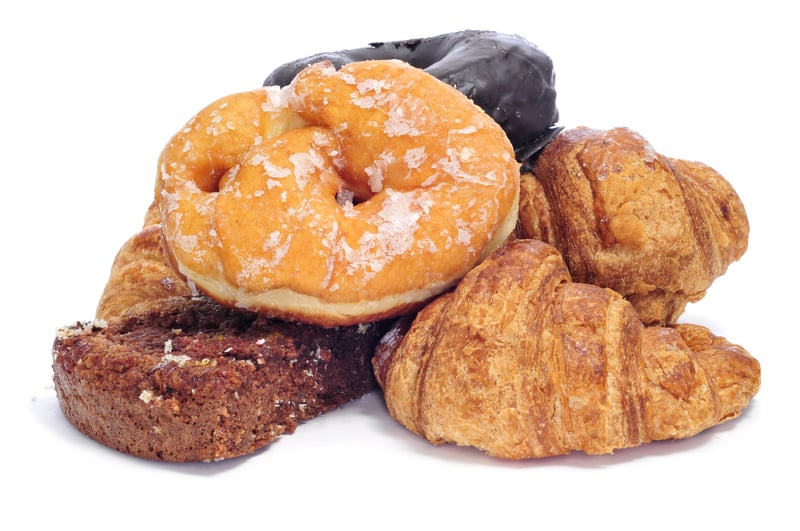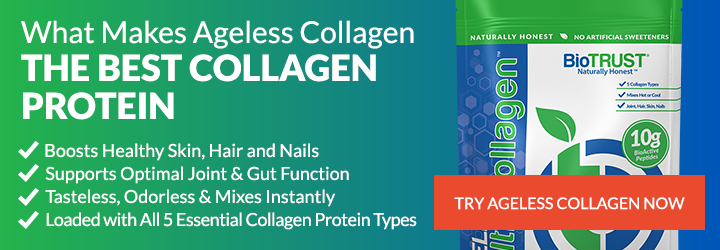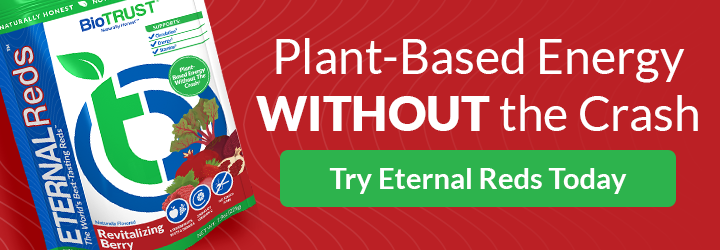The 10 Worst Breakfast Foods (and Healthier Options)

One of the best ways to kick off a great day is to properly fuel your body with a delicious breakfast to feel energized, clear, and focused. Unfortunately, it’s all too easy to instead choose the worst breakfast foods for convenience or habit, only to leave your body feeling heavy and weighed down, your brain in a fog, and your gut battling for balance.
These foods can also mess with your metabolism, increase the risk of disease, and lead to weight gain. So, what are the worst breakfast foods? And more importantly, what can you eat instead to fuel a powerful, productive day?
10 Worst Breakfast Foods
Making better choices for your first meal of the day can also help wake up your metabolism, give your body the nutrients to help fight disease, and help you maintain a healthy weight. Win-win-win!
Here are ten breakfast foods to kick to the curb, and more importantly, what to eat instead.
1. Sugary Cereals
There’s likely no more ubiquitous breakfast food than cereal. Popular from childhood through adulthood, cereals are fast, easy, and cheap. Just open the box, pour in a bowl, add milk and a spoon, and breakfast is served.
Most of us are well-aware that the colorful concoctions or those named after candy aren’t exactly good for us. Unfortunately, even so-called “healthy” cereals that claim to provide whole grains and vitamins often leave much to be desired. The vast majority of cereals are made from mostly refined grains, topped with sugar. Some popular breakfast cereals provide more sugar per cup than found in three chocolate chip cookies.
Sadly, they also leave out some of the most important nutrients to fuel your day, such as fiber and protein. And the nutrients they do contain are often added artificially, since the ones originally found in the whole grain were stripped away in processing.
Not only will these foods leave you dragging soon after you eat them, but high-sugar, low-fiber, low-protein foods can also increase the risk of disease, including obesity, type 2 diabetes, heart disease, and more when eaten regularly.
What to Eat Instead: Leave the cereal aisle behind and instead choose some whole-grain oatmeal topped with cinnamon, fresh fruit, and a thumb-size serving of chopped nuts. The non-refined carbohydrates and fiber will stick to your ribs for long-lasting energy. Plus, the beta-glucan (a type of fiber) in the oatmeal has been shown to support a healthy gut. Just be sure to also skip most premixed, instant oatmeal packets, which are typically also sugar bombs with much of the nutrients removed.
If cereal is one thing you just can’t give up, read through the labels carefully to find a whole-grain option that provides five or fewer grams of sugar per serving.
2. Donuts and Pastries
You probably already realize a donut or breakfast pastry is just a dessert in disguise. They typically have between 250 and 550 calories, with a whopping 15 to 30 grams of sugar, and if you order a dozen, it’s hard to limit to just one. After all, they’re not very filling.
Your body responds to that big sugar dump by releasing loads of insulin to help shuttle it out of the blood, and that sugar spike is followed by an even larger crash. So, even if you ate more than one donut or pastry, it’s not long before your body is searching for energy.
In other words, even with all those calories, you’re left feeling hungry soon after breakfast, likely craving even more sugars or refined carbs. The rest of the day can leave you looking to recover the lost energy. It’s a vicious cycle, which is why it is on our worst breakfast foods list!
What to Eat Instead: Sometimes, you just want something sweet, and that’s why you’re reaching for a pastry. Fill that void with high-fiber, complex carbs instead. That could be a bowl of oatmeal or a healthy homemade muffin, pancakes, or waffles (just see below first).
3. Traditional Pancakes
Pancakes and waffles are favorite choices for weekends or when out at restaurants. But they’re also found in the freezer section for a quick handheld weekday option. Made by mixing up flour, eggs, milk, and sugar, at first, they feel like a better option. At least they contain some protein (from the milk and eggs).
Unfortunately, whether you’re looking at pancakes or waffles, the top ingredients are typically white flour (i.e., refined grains) and sugar. We then reach for the pancake syrup to drown them in even more sugar. Worse, many people skip past real maple syrup for the maple-flavored high-fructose corn syrup (HFCS) pancake syrup. HFCS has been linked not only to prediabetes but to type 2 diabetes as it can increase inflammation and promote insulin resistance.
Maple syrup is a better choice, but because it’s more than “drizzled” on, serving sizes are often higher than we think, and it’s still a high-sugar, high-calorie addition.
What to Eat Instead: There’s no need to give up on pancakes and waffles. In fact, they’re one of the easiest foods to transform into a healthy option. Just make your own starting with whole grains or nut flours, added nuts and seeds (e.g., flaxseeds), or even some protein powder. Then top with some fresh berries, a dollop of Greek yogurt, and/or a drizzle (measure out a teaspoon rather than eyeballing it) of real maple syrup.
The added protein and fiber provide longer-lasting energy that won’t lead to an energy crash shortly after eating. And the flavor will satisfy the craving for pancakes or waffles. You can even make extra to freeze and enjoy throughout the week.
4. Sausage Biscuits
You may think a sausage biscuit makes a good breakfast. After all, it provides both protein and fats to help you stay fuller for longer compared to refined carbs. Unfortunately, the highly processed sausage and biscuits tend to both provide refined, saturated fats as well as loads of sodium and nitrates. Plus, the biscuits are made with refined flour with added sugar. All of this adds up to a food that can make high blood pressure worse, and they may even increase the risk of stroke. Nutritionally, these types of breakfasts don’t provide much.
What to Eat Instead: Reinvent the traditional breakfast sandwich. Skip the fast-food line and instead whip up an egg, add some spinach, and perhaps some sliced avocado on top of a whole-wheat English muffin. Or, for a savory breakfast on the run, make up some egg bites or egg breakfast muffins.
5. Fruit Juice
Can you have a complete breakfast without a glass of orange juice? Not according to many commercials. But unfortunately, it’s time to leave this common breakfast companion behind. Sure, it provides some vitamin C and other nutrients, but it comes with a high-sugar cost. And most OJ is highly processed, so much of the nutrition has been stripped away.
What about the other juice flavors? Some contain little, if any, actual juice. Instead, they’re sweetened with various sugars like high-fructose corn syrup. Yet even if it’s 100% juice, it’s still too much sugar to consume at once with no fiber, fat, or protein to slow absorption. So, it leads to a big surge in blood sugar followed by a spike in insulin and then a crash in blood sugar. That’s the perfect combination to leave you feeling exhausted, foggy, and hungry. (Not exactly the best way to start the day.)
What to Eat Instead: Forget the juice and eat the whole fruit instead. You’ll still enjoy all the sweet, juicy goodness, with a side of the whole fruit fiber.
6. Flavored Yogurts
Another food that has gained popularity because it’s so convenient and provides protein and prebiotics (and thus is considered “healthy”) is yogurt. This is true if you’re consuming plain yogurt, but once the flavors are added, so is a ton of sugars and unneeded calories. Even the sugar-free options are loaded with artificial sweeteners and potentially harmful additives. It is one of the worst breakfast foods hiding in a “healthier” label.
What to Eat Instead: Keep grabbing yogurt for your morning breakfast. Just go with the plain versions, which really are high in protein and probiotics (especially Greek yogurt). If you want some added sweetness, you can always add some fresh fruit and perhaps a touch of a natural low-calorie sweetener like Swerve or stevia.
7. Prepared Smoothies and Shakes
Another healthy-looking option available in nearly every grocery or convenience store are the grab-and-go, ready-to-drink fruit smoothies and shakes. While there are some exceptions, most of these offerings are high in sugar (some can have over 50 grams per serving—that’s more than you’ll find in a donut!), higher in calories, and low in nutrients, including those that fill you up and keep you energized, like protein, fiber, and healthy fats. Despite the images on the containers, some don’t even contain fruit when you look at the ingredients listed. Weird!
What about the ready-to-drink protein shakes? They seem like such a great grab-and-go option. Unfortunately, when you look at the label, many of these are loaded with sugar (sometimes as the first ingredient), artificial ingredients, artificial sweeteners, and lower-quality proteins that just leave your gut feeling bloated and uncomfortable and your energy levels fizzling out.
What to Eat Instead: To decrease calories and cost while increasing the levels of nutrients, just make your own healthy homemade smoothie or shake with your favorite protein powder, yogurt, nuts or nut butter, and fruits.
8. Breakfast Bars
Another one of the worst breakfast foods is breakfast bars (e.g., granola bars). These bars look like a great healthy option—especially if you’re on the go as they claim to provide plenty of quality protein, satiating fiber, and added nutrients. Unfortunately, they’re more likely to be loaded with various types of sugar and chemicals with little fiber or protein. Honestly, when you look at many of them, they’re more like a cookie than breakfast food.
What to Eat Instead: While there are healthier options available, one way to ensure that your breakfast bars are all they’re cracked up to be is to make your own. Some of our favorites include these Morning Glory Bars, Apple Pie Granola Bars, No-Bake Chocolate Chip Protein Bars, Café Mocha Protein Bars, and No-Bake, Low-Sugar Peanut Butter Protein Bars.
9. Muffins
A muffin… that’s got to be better than a donut, right? Not exactly. Many muffins are just morning cupcakes as they’re made with refined flour, refined oils, sugar, and eggs. Yep, the only ingredient there that’s a healthy breakfast food is the eggs. What’s more, muffins are often really big. One single muffin can be up to 333% larger than a standard portion. Throw in frosting, a cinnamon-sugar topping, chocolate chips, or dried fruits, and the sugar and calorie count can go through the roof.
What to Eat Instead: By now, you likely know what’s coming… make yourself some homemade muffins instead. You can make a batch over the weekend or one evening and store them in the fridge or freezer to enjoy one at a time throughout the week. For example, these Cinnamon Roll Muffins, Apple Pie Protein Muffins, and Cranberry Sauce Muffins are all to die for—and healthy to boot!
10. Buttered Toast with Jam
Another convenient option when running out the door is buttered toast with jam. But again, this is often a combination of refined carbohydrates, sugars, and saturated fats, none of which will energize your morning. Worse, the butter is often traded out for margarine, which is highly refined vegetable oil that provides no healthy fats at all.
What to Eat Instead: If toast is a staple, consider choosing a whole-grain bread (such as Ezekiel) and topping it with avocado rather than butter (and especially margarine) for some healthy fats. Add an egg on top for more protein, which will keep you satiated until lunchtime.
Worst Breakfast Foods: A Recap
To build a better breakfast, choose foods that provide quality proteins, filling fibers, and some healthy fats that can keep you energized and feeling fresh until lunchtime. You may also want to include some unrefined carbs (within reason) to energize your activities.
It also helps to get good at reading labels. There are a lot of marketing claims on packaged breakfast foods that can lead you to think they’re made with real fruit, whole grains, and loaded with valuable nutrients. But when you turn the package over, you realize it’s all hype, and the food contains little protein or fiber and instead is loaded with sugar, refined fats, and unhealthy, artificial additives, which is why they’re on the list of the worst breakfast foods.
These strategies will help you avoid the worst breakfast foods, so you can meet the day feeling energized and excited to get started with the fuel you need to carry you into your busy day!






 7 Signs Your Body is Seriously Low on Collagen (not just wrinkles)
7 Signs Your Body is Seriously Low on Collagen (not just wrinkles) Health Expert: "Turmeric Doesn't Work (unless...)"
Health Expert: "Turmeric Doesn't Work (unless...)" 3 Warning Signs Your Probiotic Supplement is a Total Waste
3 Warning Signs Your Probiotic Supplement is a Total Waste

